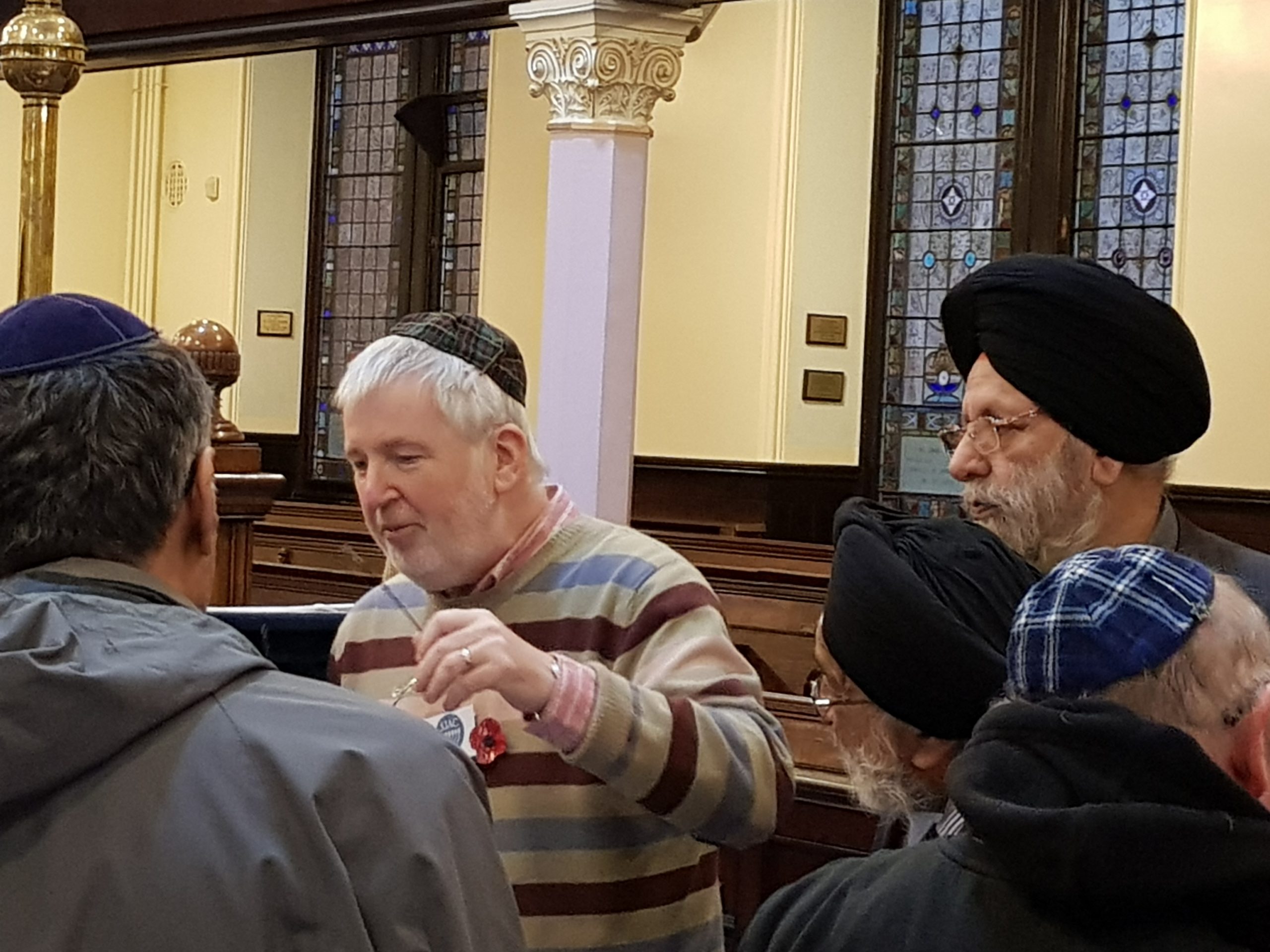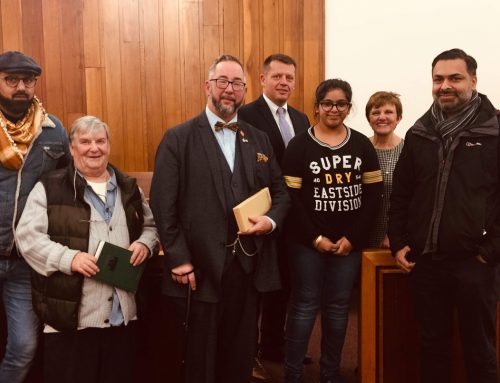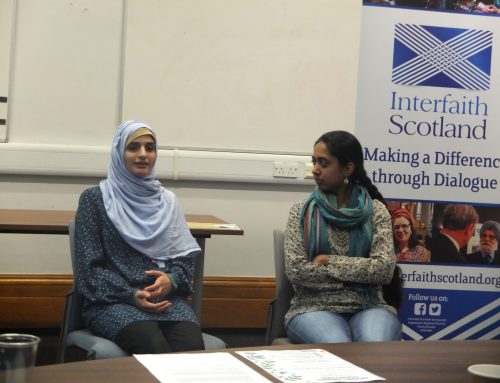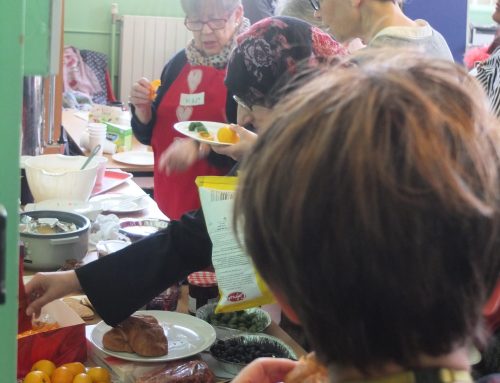Sunday the 11th November 2018 was the 100th Anniversary of the Armistice that marked the end of World War One in 1918. Interfaith Glasgow and St Mungo Museum hosted their Interfaith Week event at Garnethill Synagogue in Glasgow on the Anniversary of that same day, calling it “World War One Connecting Generations”. The Church Service in our village had been very moving that morning and then I had followed coverage on TV, especially the film footage of the Battle of the Somme that had been changed from black and white to colour. This new coloured film footage brings events from WW1 more vividly to life.
Earlier in the week we had set out as a family with my son on a quad bike laden with the fuel for a beacon which we planted on another steep hill locally, ready to light on the evening of Sunday the 11th, as part of a series of beacons to mark the 100th Anniversary of the Armistice event. My grandson was with us too, so we were three generations on that hill. The children from our local Primary School at home were to do a presentation encouraging children to be a voice against evil and not mere bystanders, while the beacon was being lit. It was a lovely way to connect a generation that knows so little about war. With this in mind, I thought that this Jewish and Sikh event which the Synagogue hosted was a most poignant way, and day, for the Synagogue to mark Interfaith Week and connecting generations.
Climbing the second steep hill that week to Garnethill brought me to the site of Glasgow’s oldest Synagogue (1879) and Scotland’s oldest Jewish Community. I trudged up the sharp incline of the hill to the Synagogue with a heavy heart at the thought that this tragedy of war had also affected Jewish and Sikh soldiers and thereby their communities, family and friends. Garnethill Synagogue was in a location on a hill chosen because it could be a light and beacon to the people in Glasgow, like the Anniversary beacon we planted on the hill overlooking our village.
There is something quite awesome about entering someone else’s place of worship and feeling a joy at that privilege. I entered, breathless after the steep climb. Having visited before I was familiar with their warm welcome and to my delight was greeted that day by Fiona Brody who I knew from the Scriptural Reasoning events run by Interfaith Scotland. Fiona conducts tours of the Synagogue and her sparky, fun attitude would liven up any occasion. Her shoes were one of the highlights of my visit. Sarah Jessica Parker watch out!
The Garnethill Archive Centre provided personal contributors from the Jewish community who were soldiers in WW1. The presenter Harvey spoke of individuals like Benjamin Eppel, Julius Diamond and Jack White whose heroism was featured in the “Victor Magazine” and who also won the Victoria Cross for his gallantry. Hatzkell Tchureczynsky, the Kaplan Brothers, also Louis Blint and Max Mendelssohn, Lazarus Wellins and Sam Wolfson were mentioned while a slide show of their photos were displayed. It was touching to engage with the individuals whose lives had been affected in a personal way and bring their stories closer. This personal touch helped animate my understanding of the involvement of the Jewish community. The Jewish soldiers from Ayr and the contribution of the Jewish women in the war effort was also talked about. Harvey discussed the Edinburgh Jewish soldiers who had laid down their lives and the contribution of the Jewish soldiers in the Boer War.
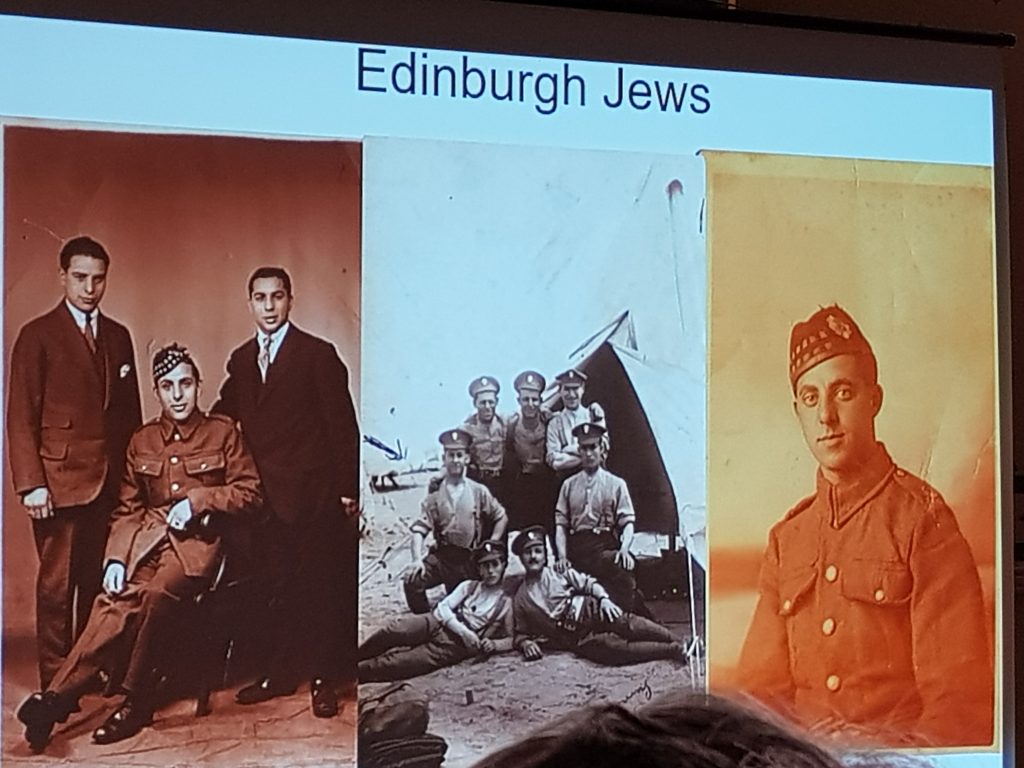
I thought of my own grandfather, a Londoner who would have fought alongside these men in WW1. I remembered how he would show me his medals, including a Military Cross, and talk about the Battle of the Somme, the rats in the trenches and the great camaraderie of the men who fought together with him there. I felt a deep sense of guilt that my connection with his stories had not been deeper and more compassionate and longed for my appreciation of his bravery to have been less shallow. I also felt a deep sense of urgency that we keep telling these stories to the young of today so that they might contextualise their importance so much better than I had as a child and regretfully even when an adult.
We were then invited to enjoy a tour of the Synagogue which is described as the historic Cathedral Synagogue of Scotland. Romanesque on the outside the basilica-form, orientalist style interior features Byzantine revival detail and is quite spectacular. The Torah scrolls were on display and the Torah Ark is particularly splendid. An invitation for a closer look at the Garnethill Archive Centre was also given. Here, a well-documented history of the Jewish community in Glasgow is meticulously archived.
Then it was the turn of the Sikh Community. According to the Commonwealth war and grave commission the total number of Sikh soldiers who died in World War One was 80,482 and a similar number again were injured. What shocking statistics! Many of these soldiers still lay in unmarked graves and have received little acknowledgment compared to their British counterparts. A shameful fact. However the British Prime Minister Sir Winston Churchill did state, in recognition, that, “British people are highly indebted and obliged to Sikhs for a long time. I know within this century we needed their help twice and they did help us very well. As a result of their timely help today we are able to live with honour, dignity and independence… they fought and died for us wearing their turbans.” On this basis British Law has had enormous respect for the Turban.
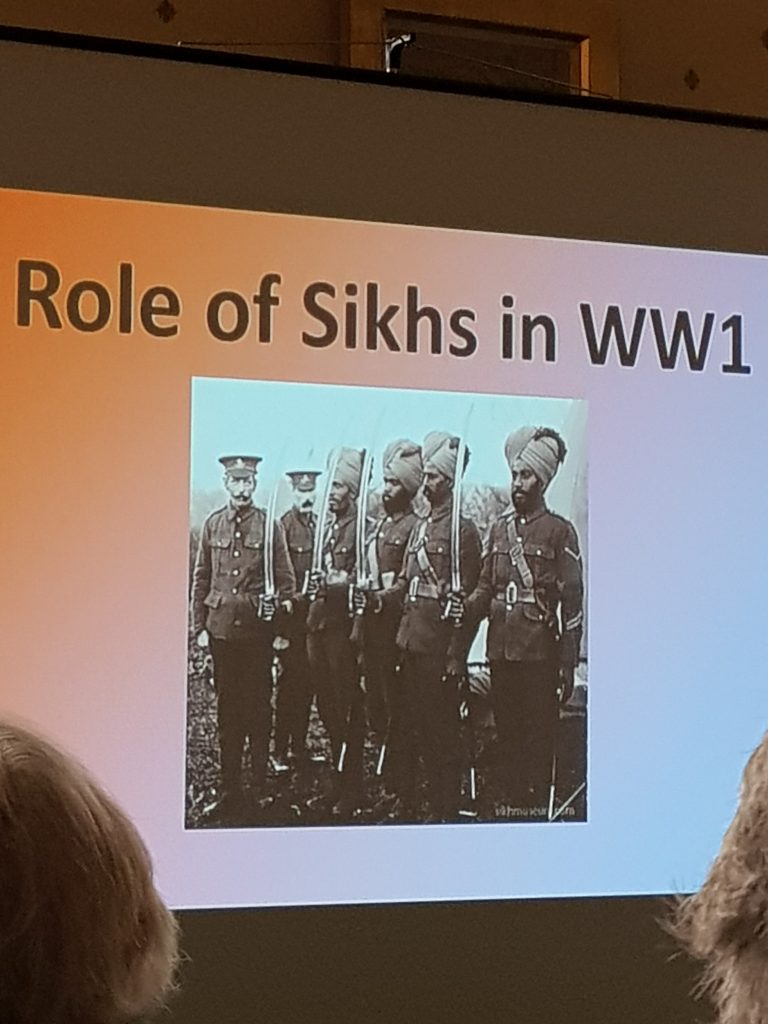
The Sikhs are described as a martial race and have a tradition of the “Saint Soldier” or “Sant Sipahi”. Sikh principles of honesty, dignity and a disciplined military ethos are combined with an ever present compassion for others in need. They have a fearsome reputation as ferocious warriors and for this are named the “Black Lions”. Their war cry is “Bole so Nihal, Sat Sri Akal” which means “One will be blessed eternally who says that God is the ultimate truth”. They believe in submission to the will of God also believing that submission to God takes away the fear of death.
Sadly it was time to shoot off down the steep hill at Garnethill, to go home to my own steep hill in our village in time to see my sons lighting the Armistice Anniversary beacon. I thought it likely that my grandfather might have been quite pleased and proud to see his great grandsons doing that, and I liked that random thought which came with a raw poignancy after my visit to the synagogue. So with quick goodbyes I rushed off. It had been a most interesting event and I had learnt so much about what truly was a “world” war and the costs to so many communities. Most of all I felt the fellowship of peoples and religious communities working together against oppression and having the strength and commitment and the “greatest of loves” that meant that they had even been prepared to lay down their lives for one another.
Shanny Newall

